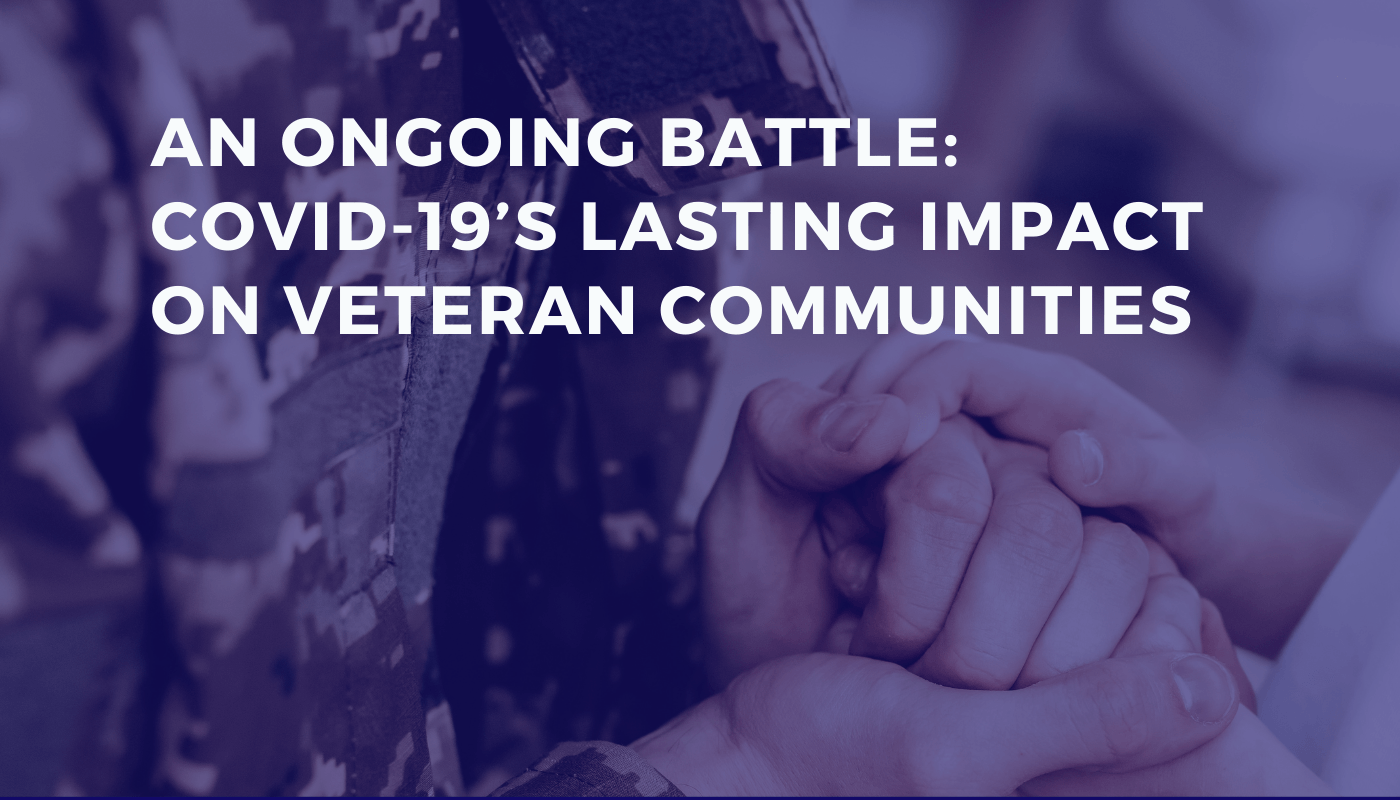
As COVID-19 loosens its grip on society, returning to pre-pandemic life will present a new set of challenges for military veterans.
The pandemic left its mark on everyone. For veterans, it had a lasting impact that furthers their need for support.
Veterans were hit hard by COVID-19, which intensified several of their most pressing issues. Here’s what we know:
- The
veteran unemployment
rate rose from 3.5% in 2020 to 5.5% in 2021.
- 15% of veterans work
in industries most negatively affected by the pandemic.
- At the peak of the pandemic, about
700,000
veterans lost their jobs.
- About 50%
of those 700,000 worked in the service industry, which was severely impacted by the pandemic.
What does all this mean?
Transitioning out of the pandemic will be a challenge. Veterans who were already experiencing obstacles securing post-service jobs, continuing their education or managing financial difficulties, now have to contend with a return to normal in a post-pandemic world. Relief efforts and support, by necessity, will need to take into account issues that are unique to veterans.
What support strategies already exist?
We’re already seeing some progress along these lines. The $2 trillion stimulus bill that President Biden signed into law March 11 included $17 billion for programs for veterans.
Here’s what’s being made available to veterans in the American Rescue Plan:
- Support for higher education.
- Additional direct stimulus payments.
- Basic needs assistance.
- Support for healthcare services.
- Increased mental health supports.
- Childcare assistance.
- Help to access reliable internet.
- Extended unemployment assistance.
- Additional veteran-specific supports.
- Tax-free student loan forgiveness.
How can veterans access support?
The provisions of the American Rescue Plan are not universal. Eligibility requirements and restrictions may hinder veterans’ ability to fully enjoy its benefits.
Here are the eligibility requirements for veterans to participate in its rapid retraining program:
- Be between the ages of 22-66.
- Unemployed as a result of the pandemic.
- Not eligible for any federal GI Bill program (If eligible for Post-9/11 GI Bill, benefits must be transferred to family members).
- Not be VA rated as totally disabled due to unemployability.
- Not enrolled in any other federal or state employment programs.
- Not receiving any unemployment or CARES Act benefits.
The program will also only run until $386 million has been spent or 17,250 veterans have been trained. It won’t cover any courses that are designed to lead to a college degree, only those that lead to a job. Therefore, courses must be approved under the VET TEC program or be on the list of high-demand occupations outlined by the Bureau of Labor Statistics.
Another provision of the American Rescue Plan calls for the allocation of $500 million to help states upgrade State Veterans Homes and $250 million in one-time emergency grants to support these facilities and ensure they can provide care to veterans during the pandemic.
Funding will not be consistent across every state home. The one-time emergency payments will be distributed to state homes based on their current number of veteran residents. State Veterans Homes can expect about $14,285 per veteran.
Other Information & Eligibility Requirements
Lower-income families may be eligible for childcare assistance. The American Rescue Plan includes a new tax program aimed at reducing child poverty and income inequality.
This applies to those who have lost their jobs or were forced to reduce their workload to address childcare issues stemming from the pandemic. Unemployed veterans can greatly benefit from this section of the plan. Here’s what we know about the childcare assistance program:
- Temporarily raises the existing child tax credit from $2,000 a year per child to $3,000 for each child aged 6 to 17 and $3,600 for children under 6.
- Offers the option for families to receive advance monthly payments.
- Will be in effect for one year, but lawmakers have said they want to make the change permanent.
Individuals who make less than $75,000 a year and jointly filed married couples who make less than $150,000 a year can qualify for the child tax credit.
Under the same requirements, veterans can expect to receive an additional direct stimulus payment of $1,400. Eligible recipients will receive the full amount per person, for themselves and their dependents.


